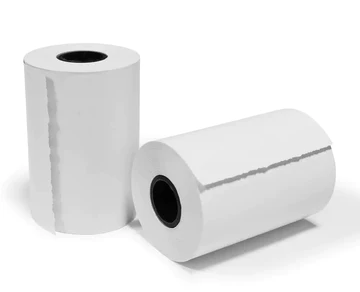A dam serves as a barrier that restricts the water flow. Their main purpose is to collect and store water. Dams create reservoirs that suppress floods and work as the holding area of the stored water.
The water from the reservoir is used for human consumption, irrigation, agriculture, and industrial use. Dams can also help in producing electricity through hydropower. Floodgates or dikes are different from dams. These structures prevent water to flow into other locations.
As the world seeks more sources for renewable energy, dams have become a major focal point. Dams have a rich history along with innovations and mechanisms that established their importance around the world.
Dams restrict acres of water and it needs a mechanism to regulate its operations. Valves are used in homes, offices, schools, and dams. Large or smaller dams are both complete with a variety of valves that regulate the operations.
History of Dams
The history of dams dates back to ancient times. Early dams were found in the Middle East region and Mesopotamia. In those times, dams controlled the water level as the region’s weather was affected by the Euphrates and Tigris rivers. The earliest dam dated back to 3000 BC. The dam is called the Jawa Dam, located in Jordan.
Dams built before the Roman civilization were only used for controlling water levels. The Romans were the most innovative during the old times. Roman planners introduced reservoirs to hold water which can be supplied to land settlements during the dry season. In the middle ages, the dam was prominently used for water control but the Roman influence on the reservoir concept continued to the industrial revolution.
Dams and valves worked together but its significant similarity is its history. Just like dams, valves were used back in the ancient era. The innovation of valves came when the Romans fully recognized their usage. The Romans utilized valves in regulating water flow in urban settlements.
The valve innovation continued to stride forward to the industrial revolution. Inventors at this period invented more valve designs which are still useful in modern times.
Three Most Common Types of Dams
To understand how dam valves work, the identification of the dam type is essential. The three most common types of dams are known as the arch, buttress and gravity dam.
Arch Dams
The Romans were the first civilization to create arch dams. During the 19th century, the engineering capabilities of the British empire helped them to pioneer three large arch dams.
The arch structure and the gravity action stabilize an arch dam. If the flow of the upstream is vertical, gravity must carry the entire weight of the foundation. The distribution of hydrostatic pressure between the arch action and the vertical cantilever depends on the dam’s stiffness in a horizontal or vertical direction.
Buttress Dams
Buttress dams are also referred to as the hollow dam. Buttress dams are solid with an upstream side supported by the downstream side through several buttresses. The dam’s wall can either be straight or curved. The majority of buttress dams are made with reinforced concrete which pushes the dam to the ground. As a monitoring solution to ensure safety to residents and nearby infrastructure, pressure sensing and measuring products can be applied to these dams for accurate and automatic measurement.
Gravity Dams
In gravity dams, the Earth’s gravity holds the dam against the water’s push. The water presses downstream, overturning the dam by rotating. The force counteracts the dam’s weight which rotates the flow of water to the other way.
What Valves are Used in Dams?
Dams utilize various valve types namely the gate, globe, and butterfly valve. Aside from these valve types, there are other special valves that are specifically utilized in the water reclamation industry.
Dam valves release water at huge volumes in relatively high-pressure and high velocity. These conditions can cause severe damage due to cavitation on the valve outlet.
The high-pressure output flow destroys many valve types at an alarming rate. Experts find ways to prevent cavitation by using the right valve type and correcting the pipe design.
Gate and Globe Valve
The gate valve works with a barrier in the pipe. When the actuator is turned, the barrier is lifted letting the water to flow. Meanwhile, the globe valve has a disk that shifts. When the disk closes, the kinetic energy from the liquid force closes the other opening.
The gate and globe valves were used during the early 20th century. Unfortunately, cavitation destroyed the valves frequently. This led experts to look for new valve designs.
Needle Valve
A needle valve has a small port with a needle-shaped plunger. Needle valves are great for precise water regulation. The needle valve became the replacement of the globe and gate valves. It has worked well for a long time. Newer designs soon replaced needle valves. Most of the new valves are retrofitted to the dam structures and does not specifically stick to one valve classification
Fixed-Cone and Jet-Flow Gate Valve
The fixed-cone valve is also known as the Howell-Bunger valve. It is very similar to a fireman’s hose nozzle. High-pressured water squeezes to the periphery of the cone. The water comes out by the change in the circular seat’s position. The water flow is adjusted by the amount of pressure pushed to the chamber right behind the cone.
The jet-flow gate valve has a smaller inlet with an inward taper before the gate. This mechanism directs water to a narrower jet as the fluid leaves the valve. The valve’s downstream port flares out, avoiding the damage coming from the intense pressure of the water.
The fixed-cone and jet-flow gate valves are resistant to cavitation damage. If the valve’s outlet is submerged, the stilling chamber needs to be constructed to dissipate the rapid water flow avoiding damages.
Butterfly Valve
Butterfly valves are installed in a chamber on the dam’s bottom outlet. It can also be installed in gravity lines which leads to hydro-power plants or treatment plants. Butterfly valves are installed with cylinders that work as pipe brakes for emergency closing.
Needle valves or fixed-cone valves are also known as control valves by classification. Control valves are placed after the butterfly valve. Butterfly valves are installed on the waterside while the control valves are fitted on the airside. The butterfly valve is responsible for the on and off functions while control valves regulate the operations. Dams have larger-scale operations which is why high-performance butterfly valves are needed to avoid any damages that could derail the system.
Conclusion
The utilization of dams has grown from water storage for consumption to being a major driver for the hydropower industry. The operation of dam valves enables dams around the world to work methodically. As dams upgrade its utilization, high-performing valves must also be produced to prevent disruptions in dam operations.




Recent Comments